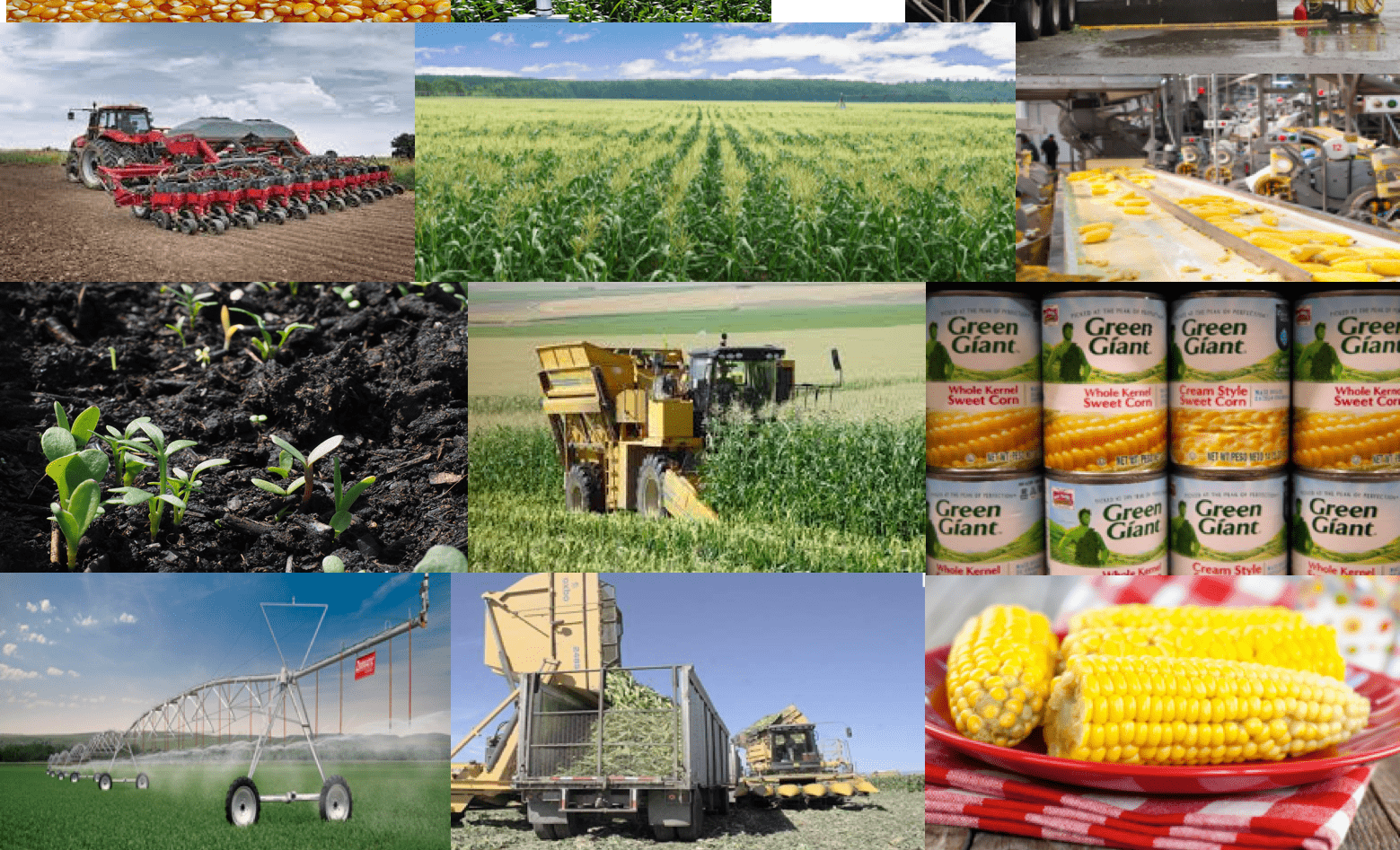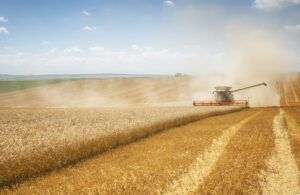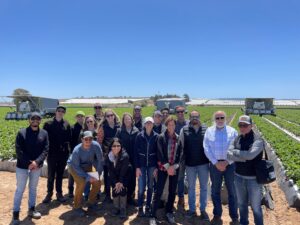Editor’s Note: Patrick Keating is founder of Keating International, an innovation consultancy, who later this week will unveil a new, in-depth report entitled Paradigm Shift in Value Creation within the Global Food System: Rise of a More Intelligent Food System. The data-heavy report delves deep into the key drivers of the global food system. Keating has a long history in the food and agriculture industry beginning with his family’s agribusiness founded in Atkinson, Nebraska in 1912 by his great-grandfather. He started his career in the financial services industry, later moving into venture capital, before co-founding a bioscience advisory firm and later working in semi-conductors and devices.
Here, Keating gives AgFunderNews an exclusive insight into the report’s findings, and a look back in time at how the food system has progressed since the earliest forms of food and agriculture technology.
Many agriculture technology startups predicate their innovations on the potential to help farmers, growers, and ranchers produce more food, with fewer inputs. But the main question for an investor, consumer, or strategic player that’s assessing the ability of the global food system to feed more with less in the next 50 years, will probably be: can we really do it?
It’s a natural response when you look at the facts.
Over the past 50 years, people have increased the amount of food they each eat each year to 575.1 kgs in 2011 from 383.6 kgs in 1961. That’s a 47% increase. If that doesn’t sound like much, the total global increase in annual food consumption by weight increased 237.8% to 40.2 trillion kgs during the same period, as the world population increased to 7 billion from 3.1 billion in 1961.
The figures from China are even more striking.
During that same period from 1961-2011, food consumption in China went from 189.6 kgs to 745.4 kgs per capita representing an increase of 292.3%. Within that, meat consumption rose a huge 1,423%, fish consumption rose 588.5%, cereal consumption rose 66.1%, vegetable consumption rose 318.1%, and fruit consumption rose 1,881.5%. These results were driven by a population explosion of 111.8% to 1.4 billion people from 660.3 million alongside an increase in per capita income from $75.00 a year to $5,574.20 representing 7332.2% in growth.
Yet, despite these enormous increases, somehow China was able to provide its population with an increase in the number of calories each person consumed daily to 3,073 from 1,415 during this period. But, the question again is – can China feed its population at the same or higher caloric level in 2050?
To answer these questions, we’ve taken an in-depth look into the past, present and future development of the global food system.
Through this work, we’ve been able to determine the adoption cycles and resources that helped transform each segment of the food system from Food System 1.0 to Food System 5.0, which we’re entering today. From our research, we’ve created a vision of this future Food System 5.0, which is the dramatic paradigm shift occurring out of the commercialization of 10-25 years of research.
The journey from Food System 1.0 to Food System 5.0
In Food System 1.0, which stretches back to pre-historic times when cooking was invented until the 1300s, the global food system provided the foundation for many of its future drivers such as population growth and the creation of forms of monetary exchange to acquire food. Anthropologist Richard Wrangham found that cooking, which evolved in this period, was probably the most significant innovation in the history of the global food system. The principal reason was that it made food softer and easier to chew.
How easy? Rather than spending on average six hours chewing what they gathered, cooking enabled early human beings to spend just an hour eating the calorific intake they needed to survive. The result of early humans eating cooked, softened food of high caloric density allowed an intake of 2,000 calories during their daily hour of chewing and swallowing. This dramatic decrease in time spent chewing would have made any pre-historic venture capitalist invest heavily in this technology!
Food System 2.0 formed in the 1300s when the world population grew to an estimated 360 million, from around 4 million people in 10,000 BC. During the period from the 1300s to the 1800s, a wide variety of innovations began to emerge globally across the food system. Animal and crop production became widespread and the first phase of globalization brought new animals, crops and ingredients back to major markets. But, for the majority of people, complex meals were off the menu and only the preserve of the wealthy, ruling classes.
It wasn’t until Food System 3.0 that incredible breakthroughs in biological, chemical, and mechanical engineering enabled food to take on new meaning for the global population. These breakthroughs included improvements in crop varieties, animal breeding, synthetic fertilizer, refrigeration, pasteurization, nutritional guidelines, processing, and waste management. And they led to the largest explosion in population in global history.
Food System 3.0 also involved the first wave of mechanization in farming as the first tractors were brought to market to replace animals. With these innovations in place and more research and development in the pipeline, people began discussing the possibility of the global food system being able to feed the world and eliminate hunger in the second half of the 20th century.
Food System 4.0 emerged from the 1920s onwards and was largely driven by the Green Revolution. At that time, the world was on the verge of the largest surge in population growth in its history that would challenge its ability to feed itself. Between 1900 and 2000 the increase in world population was three times greater than the entire previous history of humanity– an increase to 6.1 billion from 1.5 billion in just 100 years. Now the world was in desperate need of a paradigm shift in the global food system and the dreams of the “Green Revolution” underwent a major acceleration in support and funding around the world. Fortunately, this happened on a scale never seen before in the history of the world as access to capital and capital markets pushed the agenda forward at a rapid pace.
Despite two world wars and numerous other conflicts, continued advances in R&D across all segments led to the successful scaling of the industrialized food system that emerged in Food System 4.0. As a result, many challenges were overcome including droughts, poor farming practices and ill-planned shifts in political ideology that led to major famines as the global food system began to believe it could finally feed more with less. Hybridized plants supported by irrigation, fertilizers, herbicides and pesticides allowed major yield increases. Farm equipment led to higher productivity, cheaper food and a significant improvement in the time taken from harvest to shelf.
Since the year 2000, we have been in the middle of a paradigm shift into Food System 5.0. This is a period where the amount of accumulated knowledge, and research capacity, is leading to the rise of a more intelligent food system. This system is based on the growing access to high-value information and data for farmers, consumers, and everyone in between. This is information that can improve the world’s ability to feed itself with less, drawing on discoveries from the last 10-15 years.
Of course, there is serious concern about the sustainability of the world’s global food system as it operates today. The food system is complex, fragmented, yet centralized, and driven by hybridization, fertilization, mechanization, and standardization. We have 594.7 million farmers producing 6.98 billion tonnes of food per year on 4.7 billion hectares of arable land, in 36.1 billion hectares of saltwater and 9.0 billion hectares of fresh water for the 2.1 million food processors to make into products that they can distribute through the 9.3 million retailers and 26.9 million restaurants.
With increasing new innovation, the system is slowly decentralizing, and moving into a virtualized hybrid food system, designed specifically for each eco-region of the world. This hybrid food system is being driven by a biological revolution, which is converging with revolutions in communications, electronics, energy, financing, logistics, resource efficiency and software systems.
This emerging hybrid global food system is taking the best from each discipline and blending all into a healthier, more nutritious, more resource efficient and more sustainable platform for feeding more with less. Rather than “reinventing the wheel,” which involves enormous amounts of resources and time, the Global Food System in Food System 5.0 is becoming a next generation intelligent adaptive system that is moving automatically to acquire and manage knowledge.
Get your hands on the report from Friday here.
Want to write a guest commentary? Email [email protected]

















Can blockchain alone guarantee traceability in our food system?